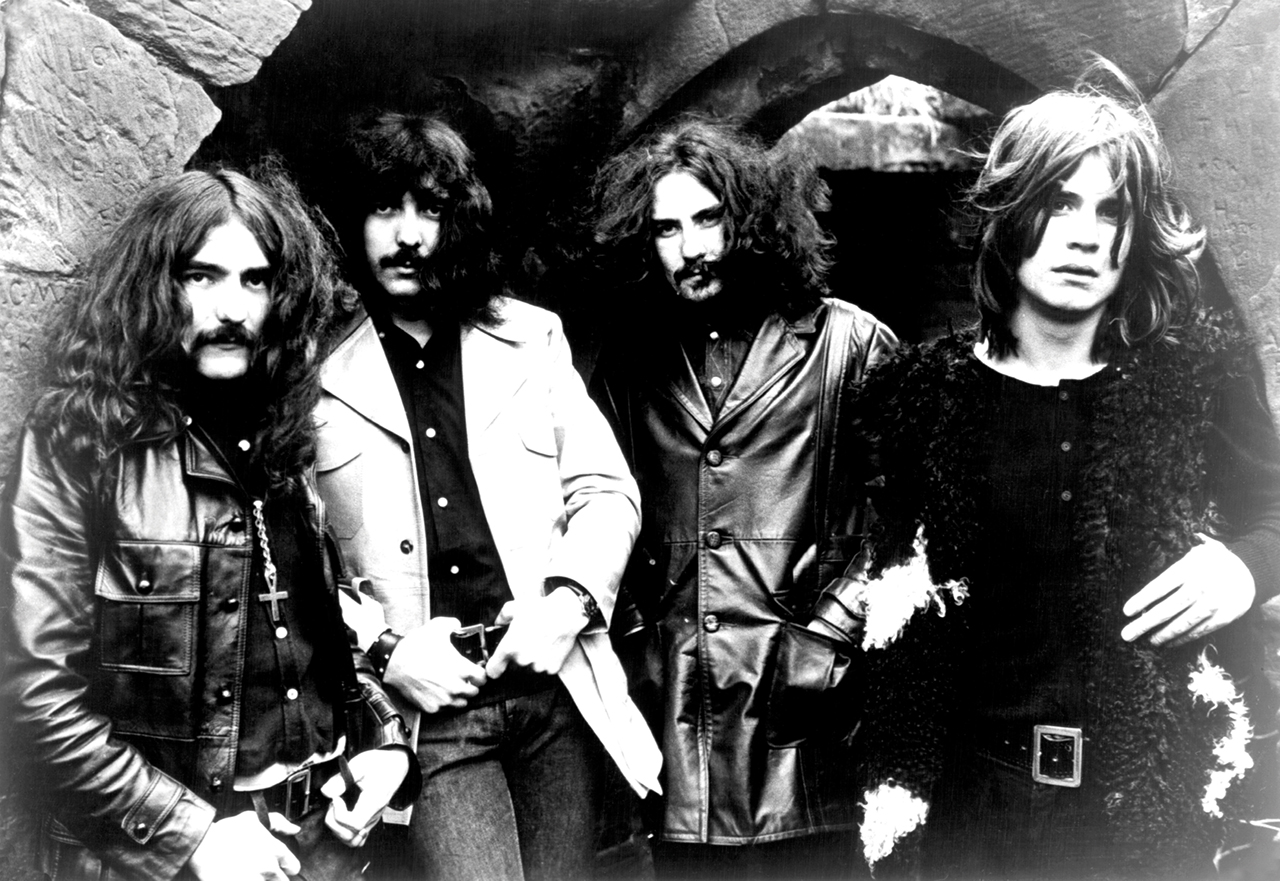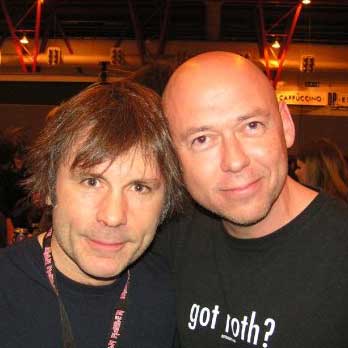How Motörhead influenced heavy music
Whether it's Metallica, Slipknot, Napalm Death or Asking Alexandria, if it's loud and heavy, it owes its life to Motörhead

Lemmy had a simple way of introducing his band: “We are Motörhead, and we play rock’n’roll.”
For him, Motörhead was never a heavy metal band, and he hated it whenever anyone said they were. But the way that Motörhead played rock’n’roll – fast, bludgeoning, everything louder than everything else – was an inspiration to almost every metal band that followed in their wake.
It’s all part of the cyclical nature of music. As a kid growing up in the 1950s, Lemmy’s heroes were the original rock’n’roll stars of that era – principally, Elvis and Little Richard. Likewise, the earthshaking sound of early Motörhead albums such as 1979’s Overkill and Bomber, and 1980’s Ace Of Spades, would light a fire inside a bunch of teenagers who went on to form bands of their own.
As Metallica’s Lars Ulrich said to Rolling Stone following Lemmy’s death: “I got introduced to Motörhead’s music in 1979, when Overkill came out. I’d never heard anything like that in my life. The subsequent ride that this music took me on was to a place I’d never been. So when I say that Lemmy is the primary reason I’m in a band, and that Metallica exists because of him, it’s no cheap exaggeration.”
The speed and raw aggression of Motörhead was hugely influential for Metallica and pretty much every other band that emerged from the thrash metal movement. And the same is true of countless other extreme metal and punk bands that emerged in the 80s, from Discharge, GBH and Venom through to Napalm Death.
“Motörhead were the first extreme band,” says Napalm Death singer Barney Greenway. “People can say it was Black Sabbath because of the heaviness and that grim, morose sound. But for me it was Motörhead, which is ironic, because Lemmy wasn’t particularly fond of heavy metal in its purest form. Thrash would never have happened without Motörhead – there’s no debate about that. And nor would that third wave of punk, with Crass, Discharge and GBH. If you listen to the bass sound on those punk records – a sound like a concrete mixer – that’s from Lemmy, nobody else.”

This blurring of the lines between metal and punk was something that Motörhead achieved by accident, not design. And yet it sparked a revolution in heavy music. “Motörhead had a unique sound,” says Chuck Billy, frontman of Bay Area thrashers Testament. “It wasn’t a typical heavy metal tone. It was distorted, with a punk rock edge. It inspired a lot of bands.”
Sign up below to get the latest from Metal Hammer, plus exclusive special offers, direct to your inbox!
Among them were Brazilian thrashers Sepultura. “Motörhead represented the birth of that whole era of united punk and metal,” says original Seps frontman Max Cavalera. “They made it OK to like both things, and so they were really the pioneers of thrash. Without Motörhead there would be no Metallica, no Slayer, and, of course, no Sepultura, because the name of the band was my translation into Portuguese of a Motörhead song, Dancing On Your Grave!”
And in Germany, where the Ruhr industrial region was home in the 80s to the most vibrant thrash metal scene outside of California’s Bay Area, the influence of Motörhead lay deep in the brutal music of Sodom and Kreator. “Ace Of Spades was the first thrash metal album,” says Kreator’s Mille Petrozza.
“I know Lemmy wouldn’t have agreed, but the whole thrash metal scene is in that record. Metallica had such a huge Motörhead influence on Kill ’Em All, and other bands, like Kreator, took that influence from Metallica.”
For Sodom bassist/vocalist Tom Angelripper, Motörhead had a profound effect on his life. “If there had been no Lemmy Kilmister,” he says, “there’d have been no Tom Angelripper. I would be taking early retirement as a former pitman and be bored to death.”
For so many of these musicians, there is one Motörhead song, above all others, that proved seminal. It was Overkill that turned Lars Ulrich and Barney Greenway into Motörhead fans, and so it was for Anthrax guitarist Scott Ian. “The fast double-kick drumming in Overkill was basically a template for us,” says Scott. “And in those formative years, we lived and breathed Motörhead.”
Motörhead were the first extreme band
But there was something else – something beyond the music – that made Motörhead such an inspiration to so many bands. It’s something that Philip Anselmo sums up in a single word: “Attitude.”
It was in the early 90s, when he was fronting Pantera, that Philip first met and befriended Lemmy. As he says now, he can hear echoes of Motörhead in some of his favourite bands. “I hear it in Crowbar and High On Fire. And of course I hear it in Venom, on _Black _Metal and Die Hard – that bulldozer bass sound, heavy on the distortion, baby!”
And yet, when Philip says that Motörhead changed his life, he doesn’t talk about double-kick drumming or _Ace _Of Spades or the way Lemmy sang. “The significance of Motörhead was that don’t-give-a-fuck attitude – the ‘fuck you’ attitude,” he adds. “That was something I took to heart big time when I was an impressionable kid. And it’s been with me all my life.”
Pig In The Game
Why Motörhead’s iconic mascot is as metal as it gets
**
**Think it was only in their music that Motörhead completely redefined metal? One of the most striking aspects of their self-titled ’77 debut was its cover art: black, with the band’s logo stamped across it in blood red, over a snarling, hellish beast boasting imposing, chain-bedangled tusks. Years before the likes of Iron Maiden, Megadeth, Avenged Sevenfold and Misfits had made their monstrous mascots a central part of their image, Motörhead had introduced the world to their War Pig – affectionately later known as Snaggletooth.
“The inspiration came from just being a naturally pissed-off bastard!” said artist and Snaggletooth creator Joe Petagno later. “And Lemmy’s the same way! I did a lot of research on skull types and found a cross-breed gorilla-wolf-dog combination would work nicely with some oversized boar horns. Lemmy added the helmet, chains, spit, spikes and grit.”
Arguably the first true heavy metal mascot, Snaggletooth has remained an imperious presence throughout the band’s career and within metal lore itself, and will doubtless be remembered as one of the most iconic characters to ever grace our world.
Freelance writer for Classic Rock since 2005, Paul Elliott has worked for leading music titles since 1985, including Sounds, Kerrang!, MOJO and Q. He is the author of several books including the first biography of Guns N’ Roses and the autobiography of bodyguard-to-the-stars Danny Francis. He has written liner notes for classic album reissues by artists such as Def Leppard, Thin Lizzy and Kiss, and currently works as content editor for Total Guitar. He lives in Bath - of which David Coverdale recently said: “How very Roman of you!”

